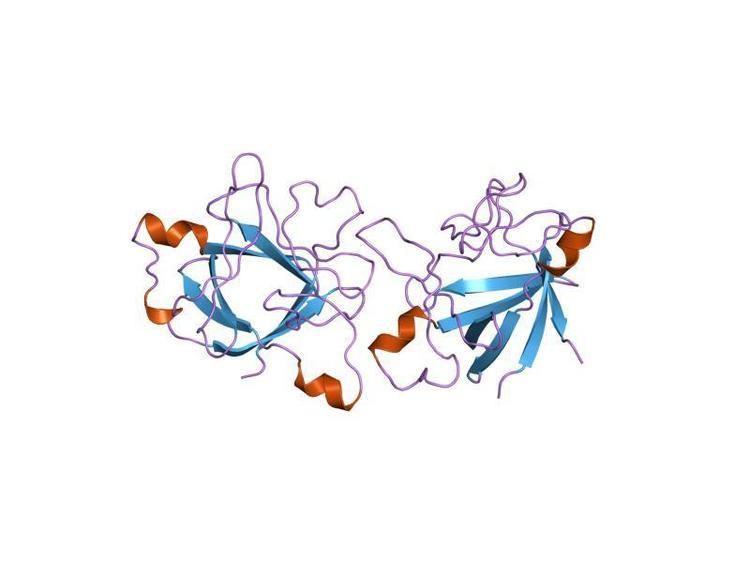Species Human Entrez 3557 | Human Mouse Ensembl ENSG00000136689 | |
 | ||
Aliases IL1RN, DIRA, ICIL-1RA, IL-1RN, IL-1ra, IL-1ra3, IL1F3, IL1RA, IRAP, MVCD4, interleukin 1 receptor antagonist External IDs OMIM: 147679 MGI: 96547 HomoloGene: 11163 GeneCards: IL1RN | ||
The interleukin-1 receptor antagonist (IL-1RA) is a protein that in humans is encoded by the IL1RN gene.
Contents
IL-1RA was initially called the IL-1 inhibitor and was discovered separately in 1984 by two independent laboratories. IL-1RA is an agent that binds non-productively to the cell surface interleukin-1 receptor (IL-1R), the same receptor that binds interleukin 1 (IL-1), preventing IL-1 from sending a signal to that cell.
Function
IL-1RA is a member of the interleukin 1 cytokine family. IL1Ra is secreted by various types of cells including immune cells, epithelial cells, and adipocytes, and is a natural inhibitor of the pro-inflammatory effect of IL1β. This protein inhibits the activities of interleukin 1, alpha (IL1A) and interleukin 1, beta (IL1B), and modulates a variety of interleukin 1 related immune and inflammatory responses. This gene and five other closely related cytokine genes form a gene cluster spanning approximately 400 kb on chromosome 2. Four alternatively spliced transcript variants encoding distinct isoforms have been reported.
Clinical significance
A polymorphism of this gene is reported to be associated with increased risk of osteoporotic fractures and gastric cancer.
Mutations in the IL1RN gene results in a rare disease called deficiency of the interleukin-1–receptor antagonist (DIRA). Variants of the IL1RN gene is also associated with risk of schizophrenia. Elevated levels of IL1RN has been found in serum of schizophrenia patients.
An interleukin 1 receptor antagonist is used in the treatment of rheumatoid arthritis, an autoimmune disease in which IL-1 plays a key role. It is commercially produced as anakinra, which is a human recombinant form of IL-1RA. In terms of protein similarities, IL-1β is more closely related to IL-1RA than it is to IL- 1α. The amino acids that are identical between mature human IL-1α and mature IL-1β is 22% while it is 26% when comparing IL-1β to IL-1RA and only 18% when comparing IL-1α to IL-1RA.
Use in horses
Interleukin 1 receptor antagonist is used in horses for the treatment of equine lameness secondary to joint and soft-tissue injury.
